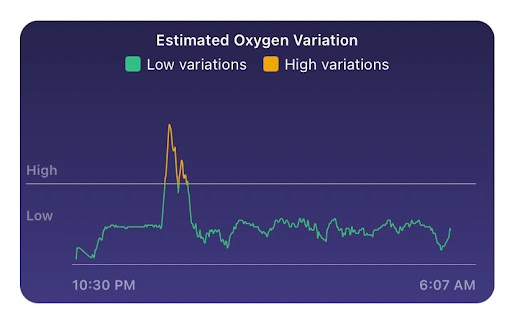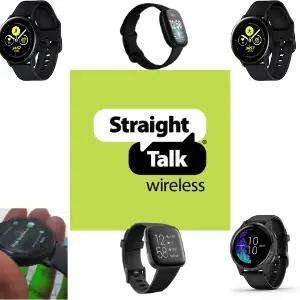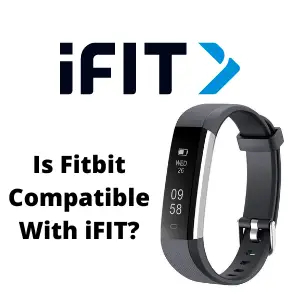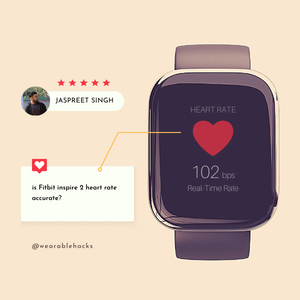How Accurate Is Fitbit Oxygen Variation
Fitbit activity trackers monitor various aspects of your health. Besides measuring your heart rate and daily steps, Fitbits use a sensor and a pulse oximeter to measure your blood oxygen variation. Use Fitbit wearables such as Charge 3, Iconic, and Fitbit Versa 2 to detect the onset of blood saturation issues like asthma and sleep apnea.
Fitbit’s oxygen sensors are stable even in intense movement, with an accuracy between 93.6% and 96.7%. Oxygen variation among healthy people should be between 95% and 100%. However, Fitbit wearables do not show the percentages. Instead, Fitbit estimates and classifies your heart rate variations into two classes: low and high.
Your blood oxygen levels are a vital indicator of your body’s general performance. Low oxygen to your body cells can increase your breathing and cause shortness of breath and headaches. Breathing large amounts of molecular oxygen can also cause oxygen poisoning. In this article, you will learn how accurate is Fitbit oxygen variation.
Related article: Is Fitbit Inspire 2 Heart Rate Accurate?
Fitbit SpO2 sensor explained
Fitbit SpO2 sensor is located at the bottom of the smartwatch. It is designed to be in contact with your wrist. Your wrist has a thin layer of skin and a rich network of blood vessels. At the point of contact, you can see the infrared light-emitting diodes. They illuminate your blood and determine your oxygen variation through reflectance oximetry.
Reflectance oximetry allows Fitbit activity trackers to take diverse blood measurements on your wrists, ankles, forehead, or chest. Reflectance oximetry and photoplethysmography are optical measurement technologies in Fitbits. Unlike the former, which monitors your blood oxygen variation, photoplethysmography monitors your heart rate variation.
These wearable optical technologies read your blood color. When illuminated using infrared light, oxygenated blood, usually bright red, will reflect more red light. On the other hand, dark red deoxygenated blood reflects less red light and more infrared light. The Fitbit oxygen sensors calculate the estimate of the difference to establish your oxygen variation.
Therefore, Fitbit’s oxygen variation is pretty accurate and reliable. However, it depends on how long you’ve used the smartwatch, your skin type, and motion artifacts, among other things. Thus, Fitbits can significantly impact your healthcare conclusions and decision-making.
Here are some factors influencing the accuracy of Fitbit oxygen variation:
Skin type
Infrared light penetrates a lighter skin and reflects your blood to the pulse oximeter without much obstruction. On the other hand, darker skin tones absorb more light, reducing infrared penetration and reflection.
Skin thickness also influences the accuracy of Fitbit oxygen variation. Your Fitbit Versa 2 oxygen variation records will be slightly inaccurate but within an acceptable error margin if you have thicker skin.
Motion artifacts
When exercising with your Fitbit, unwanted electrical inputs build up on the device and cause misregistration of your blood oxygen variation. Motion artifacts can occur if you wear Fitbit on your wrist loosely.
Since the SpO2 sensors continuously scan your blood, the movements can cause blurs, streaks, or shades over the sensor. Your Fitbit may register broken pieces of activity and health data, lowering the device’s accuracy.
Altitude
Generally, oxygen saturation is low at higher altitudes and high at lower altitudes. For example, if you are hiking uphill, you will be headed towards low oxygen. Therefore, high altitudes desaturate your blood.
Do not worry if you spot significant oxygen variation in your Fitbit if you have recently moved to a high-altitude region. However, if you stay there for more than three days, your cells will acclimatize to the new altitude, and your Fitbit oxygen variation will return to more accurate.
Your overall health
Your overall health is also a critical factor in the accuracy of Fitbit oxygen variation. If you have an underlying respiratory or blood condition, your blood could be more or less denser.
That could transmit unreliable blood reflections to your Fitbit’s blood oxygen sensor. I recommend that you do a haemogram test to reveal any health issues that can impact the accuracy of your Fitbit smartwatch.
Age of your Fitbit device
Wearable activity trackers wear out after a long time of use. For instance, Fitbit Charge 3 has a lifespan of about two years. Although taking care of it can add more life to the activity tracker, the sensor’s performance declines.
The inaccuracy of oxygen sensors after prolonged use is caused by diffusion and electromigration. You are more likely to get accurate Fitbit oxygen variation measurements using a new Fitbit Charge 3 than using an old or outdated one.
Read also: How Accurate is Samsung Health Sleep?
Why is Fitbit oxygen variation monitoring important?
Oxygen variation monitoring is essential for your mental and physical health and fitness. Without a Fitbit smartwatch, you will rely on several doctor visits. Worse, you may realize there is a problem with your system when it’s too late.
Here are some reasons why Fitbit oxygen variation monitoring is essential:
Detect early onset of asthma and sleep apnea
You can wear your Fitbit to bed to track your sleep quality. Significant oxygen variations on the Fitbit graph indicate breathing problems when asleep. Sleep apnea occurs when your breathing continuously stops and starts during sleep.
Since you are asleep, you may not know you are experiencing this potentially severe condition unless you use Fitbit. Similarly, you can detect potential infections or allergies that may cause asthma before the lungs shut down.
Understand your ability to perform intense activities
Oxygen is essential for energy. Activities such as running or biking increase your breathing because your cells need more oxygen to detoxify accumulated carbon dioxide. If your cells get low oxygen, you will feel dizzy, tired, and experience headaches.
If your Fitbit oxygen variation is lower than 95%, intense activities could make you unconscious. A healthy SpO2 level is between 95% and 100%. Avoid performing high activities when your oxygen variation indicates “high.” If that continues, consult your doctor.
Make a diet change
Fitbit smartwatches can also help you make a shift in your diet. Nutritionists suggest that foods such as beetroot, meat, cauliflower, and cabbage are good oxygen supply sources for your system. A diet rich in iron and nitrates could be lifesaving if you start to notice high irregular Fitbit oxygen variation.
Know if you need a ventilator
A ventilator is essential when your body cannot breathe for itself. Although medical SpO2 sensors are more accurate in that context, Fitbit oxygen variations can let you know whether your lungs require a ventilator to help with breathing.
How can I monitor my blood oxygen level on Fitbit?
Measuring your oxygen variation on Fitbit is pretty simple. The first thing you need is a Fitbit smartwatch or activity tracker. Fitbit offers a wide range of devices to suit your budget and preferences. If you have one, I will tell you how to track your SpO2.
But first, here are some Fitbit wearables that can monitor your blood oxygen variation:
Now, follow these steps to track your oxygen variation on Fitbit:
- Wear Fitbit day and night for at least 24 hours
- Wake up and open the Fitbit app
- Tap Health Metrics
- Scroll to Oxygen Saturation
- Study the SpO2 graph
How to get accurate oxygen variation on Fitbit

The x-axis represents time, and the y-axis is the oxygen variation. If your Fitbit is showing inaccurate oxygen variation results, here are some actions to take:
- Wear the tracker tight and snuggly on your wrist
- Eat a diet of iron and nitrates to enhance your blood oxygen
- Apply lotion to dry skin before wearing Fitbit
- Update your Fitbit’s WearOS
- Buy a new activity tracker
In conclusion
Fitbit tracker’s oxygen sensors are stable even in intense movement, with an accuracy between 93.6% and 96.7%. However, a healthy SpO2 level is between 95% and 100%. Fitbit oxygen variation records will be slightly inaccurate but within an acceptable error margin.
Use it to detect the early onset of asthma and sleep apnea and make a diet change. Did you find this article interesting? How long have you used Fitbit to monitor your oxygen variation? Share with me your experiences in the comments below.





